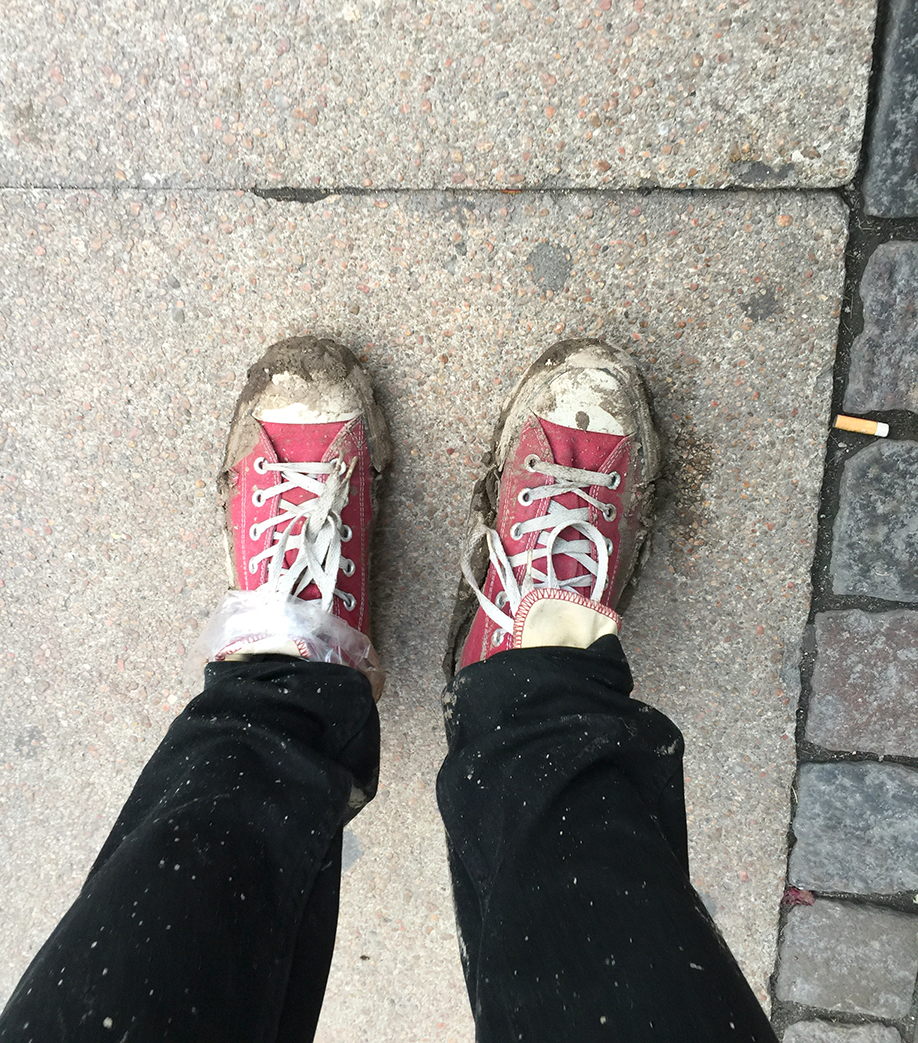- use R to extract geotagged data from the images’ exif files
- use the leaflet package to map locations
- customise our map and add popup with images and various information
Installing packages
I sometimes use the ‘pacman’ package, which installs (if necessary) and loads multiple packages.
if(!require("pacman")) install.packages("pacman")## Loading required package: pacmanpacman::p_load(exifr,dplyr,leaflet,mapview,magrittr)
Extracting geodata from exif files
The geodata has already been included in the data file. But this is an easy way of creating a data frame with coordinates for each image file. We’ll do this in R. You can also do on the command line if you install ‘exiftool’ and use the following line of code:
exiftool -filename -gpslatitude -gpslongitude -T -n NAME_OF_DIRECTORY > out.txt
exifData <- read_exif("imageFolderName",recursive=T)
exifData <- select(exifData,FileName,
GPSLongitude, GPSLatitude)
write.csv2(exifData, 'exifData.csv',sep=",",
row.names = F)
Loading and handling data
Since we already have all the variables we need in the data file, there’s no need to merge it with the exif data. We simply do some minor cleaning of the data and add a variable for a remote repository in which all image files are stored.
df <- read.csv2("streetArtUpdate1.csv",stringsAsFactors = F,header = T)
# change coordinates to numeric values
df$Longitude <- as.numeric(df$Longitude)
df$Latitude <- as.numeric(df$Latitude)
# add remote path for image files
df$remotePath <- paste0("http://dev.humlab.lu.se/tmp/img/",df$Filename)
# remove one data point with erroneous geodata
df <- df[df$Title!="The Greek health system",]
Basic mapping with leaflet
Let’s first have a look at how easy it is to create a leaflet map with markers for each location in our data.
#Create basic world map
athensMap <- leaflet() %>%
addTiles() %>%
# add points
addMarkers(lng = df$Longitude,lat = df$Latitude)
athensMap
Customizing our map with popups etc.
Let’s add the following elements to our map:
1. A different tile layer
2. Markers with popup capability
3. Include popup images and multiple variables containing information
4. Cluster our markers
Please note that for some reason, you might need to click more than once on a marker to see images.
tile <- 'https://cartodb-basemaps-{s}.global.ssl.fastly.net/light_all/{z}/{x}/{y}.png'
athensMap2 <- leaflet() %>%
# Add a base layer
addTiles(tile) %>%
# add markers
addAwesomeMarkers(lng=df$Longitude, lat=df$Latitude,
# add popup with images and variables as text
popup=paste(popupImage(df$remotePath, src = c("remote")),"<br>",
"Title: ",paste("<a href=",df$remotePath,">",df$Title,"</a>"),"<br>",
"Creator: ",df$Name_of_the_creator,"<br>",
"Type: ",df$Pictorial_verbopictorial,"<br>",
"Text: ",paste("'",df$Text,"'")),
# organise points as clusters
clusterOptions = markerClusterOptions(),
label = df$Title) %>%
# include minimap
addMiniMap()
athensMap2